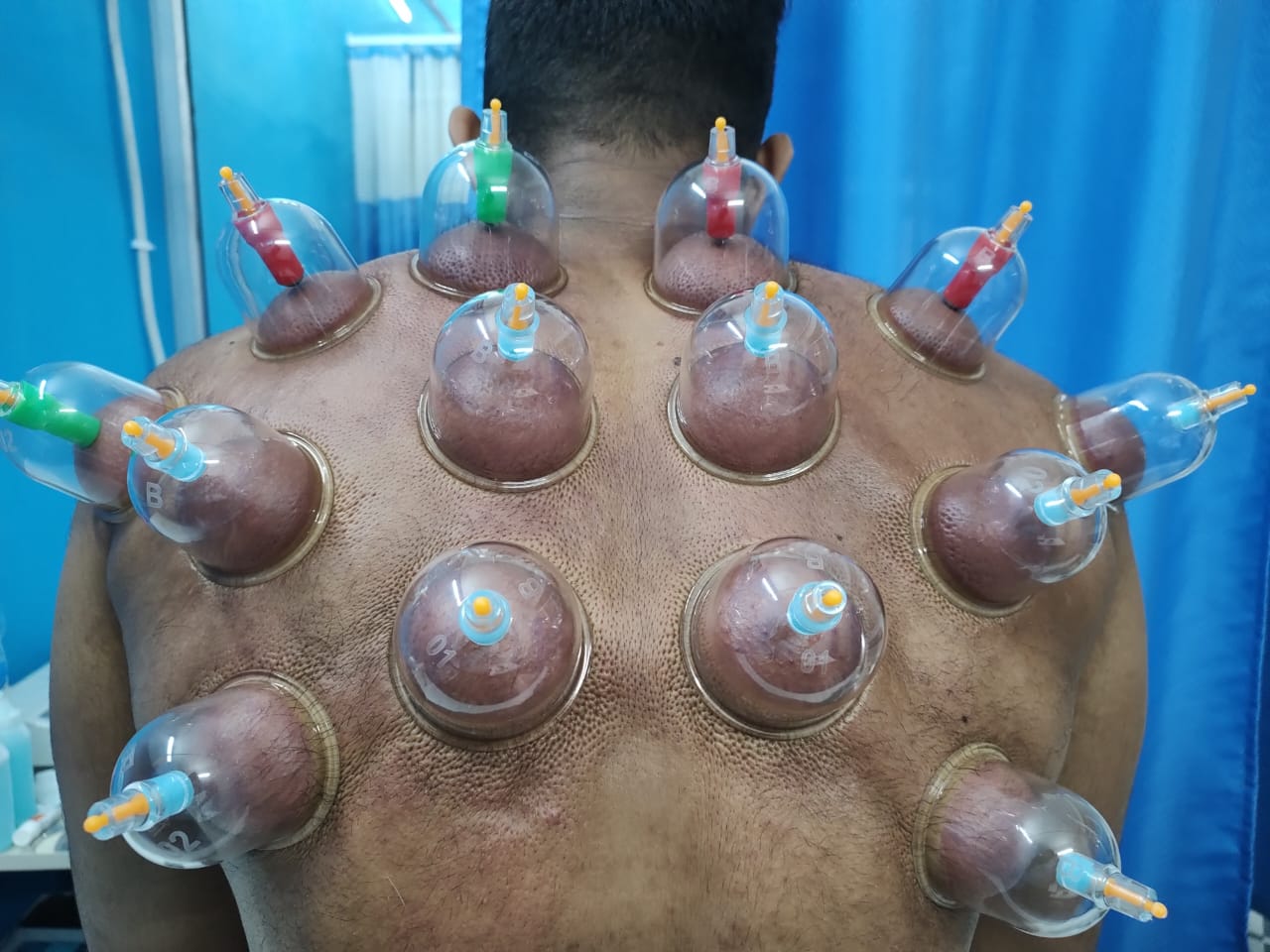
Cupping Therapy is a traditional form of alternative medicine in which suction is created on the skin using cups. This therapy is believed to promote healing, increase blood flow, and alleviate pain or muscle tension. Cupping therapy has been used for thousands of years in different cultures, including traditional Chinese medicine, Middle Eastern practices, and ancient Egyptian medicine.



Types of Cupping Therapy:
- Dry Cupping:
- Involves creating a vacuum inside the cup placed on the skin. This vacuum pulls the skin and superficial muscle layer into the cup.
- Cups may be left in place for 5-15 minutes.
- Wet Cupping (Hijama):
- Involves a small incision made in the skin before the cup is applied, allowing a small amount of blood to be drawn out.
- Wet cupping is often used in Islamic medicine and is believed to detoxify the body.
- Fire Cupping:
- Fire is used to heat the air inside the cup to create a vacuum before applying it to the skin.
- When the fire dies out, the cup is placed on the skin, creating suction.
- Massage Cupping:
- Involves moving the cup across the skin while maintaining suction.
- Often used with oils to help glide the cup over the skin, providing a massage-like effect.
How Cupping Works:
- A therapist places special cups on the skin to create suction.
- This suction draws blood to the surface, encouraging increased blood circulation, promoting healing, and relieving muscle tension.
- Cups can be made from materials like glass, bamboo, silicone, or plastic.

Benefits of Cupping Therapy:
- Pain Relief: Helps alleviate back pain, neck pain, and muscle stiffness.
- Improved Blood Flow: Increases circulation in the area where the cups are applied.
- Muscle Relaxation: Relieves tight muscles and reduces muscle spasms.
- Inflammation Reduction: Helps in reducing inflammation associated with conditions like arthritis.
- Detoxification: Wet cupping is believed to draw toxins out of the body.
- Improved Range of Motion: Enhances flexibility and mobility in stiff areas.
- Stress and Anxiety Relief: Promotes relaxation and reduces feelings of tension.
Common Areas for Cupping:
- Back (most common)
- Shoulders
- Neck
- Legs
What to Expect During a Session:
- Preparation: The skin is cleaned, and cups are placed on specific areas of the body.
- Suction Creation: Either through heat or mechanical suction, the cup is attached to the skin.
- Duration: The cups remain on the skin for 5-15 minutes.
- Aftermath: Red or purple marks (circular bruises) may appear on the skin but typically fade within a week.
Side Effects and Risks:
- Bruising: Red or purple marks where the cups were placed.
- Skin Irritation: Temporary irritation may occur on sensitive skin.
- Infection Risk: In wet cupping, there’s a slight risk of infection if not done hygienically.
- Dizziness or Lightheadedness: Some people may feel dizzy after treatment, especially if too many cups are used.



